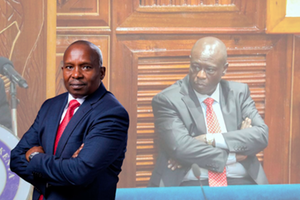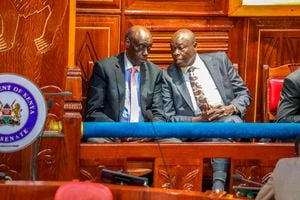Davis & Shirtliff seeks solar energy adoption partnerships

Solar energy has gained traction in most countries around the world.
What you need to know:
- Partnerships will see excess electricity generated from solar panels sent back to the grid.
- The company noted that the net metering system has potential to improve return on investment.
Water and energy equipment firm, Davis & Shirtliff, is seeking to partner with local utilities such as Kenya Power to promote the adoption of solar energy and net metering systems, to increase the supply of clean energy to the grid.
According to the company, the partnership will not only streamline the interconnection process, but also offer joint programmes that promote solar energy and net metering adoption in the country, thereby significantly reducing the upfront cost for customers.
“The partnerships can help in offering flexible financing solutions such as solar loans, leases, and power purchase agreements (PPAs),” said Mr Norman Chege, the Group Solar Manager at Davis & Shirtliff.
The partnerships would see excess electricity generated from solar panels especially during sunny days sent back to the grid, as the net metering system measures both the electricity consumed from the grid and the electricity sent back.
Electricity costs
When excess solar energy is produced, the meter runs backward, indicating that electricity is being fed into the grid. The utility company credits the customer’s account for the excess electricity sent to the grid.
The credits are then used to offset the electricity consumed from the grid when solar panels aren’t producing enough electricity, such as at night or on cloudy days.
“Users can lower their monthly electricity costs by offsetting their grid consumption with the electricity they generate,” explained Mr Chege.
The company noted that the net metering system has potential to improve return on investment in the renewable energy systems and shortening the payback period for the initial installation costs.
Davis & Shirtliff distributes Huawei Grid Connect Inverters that convert the direct current (DC) electricity produced by solar panels into alternating current (AC) electricity, which are used by household appliances and fed into the grid.
Renewable energy
The company also provides Huawei Monitoring Systems that allow homeowners or businesses to track the performance and output of their systems.
In 2023, the government approved net metering regulations, allowing homes and businesses that generate renewable energy for their own use to feed their excess power into the grid and offset their bills.
Under this system, customers will feed electricity back into the grid using the existing Kenya Power lines that supply power to their homes or businesses.
A standard household requires 3000 to 5000 watts of solar power, which is capable of operating electrical appliances such as a fridge, microwave, and television, alongside an electric fence and CCTV.
Kenya Power in the nine months to September 2022 bought 263.55 GWh of solar energy, marking a 2.8 times increase from 92.91 GWh in a similar period in 2021.




